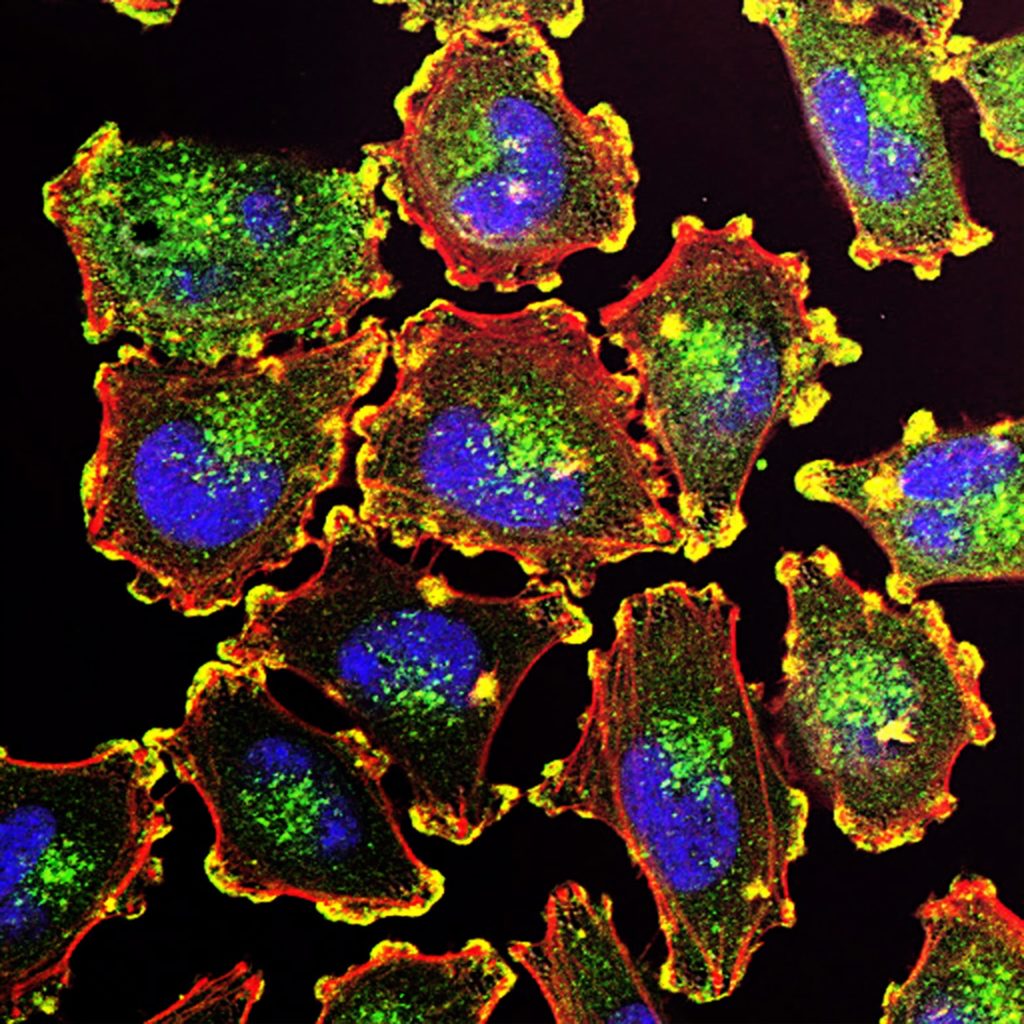If there’s one food that can be called a superfood, it’s beef liver.
Yes, I know. The word ‘superfood‘ has been through a lot and has been raped by every marketer for their own purposes. I am not a fan of the word either…
However, I am serious about it. As you will see in this post, animal liver is packed with nutrients. The same is true of many other offals when you eat a holistic nose-to-tail diet. Some substances like the real vitamin A 1the retinols, like retinol, retinoic acid, and retinal. are found exclusively in these foods.
That’s why eating liver regularly is a huge step to better health because of its immense amount of nutrients. I know at first it’s a big step to being able to get it down, but you can find my tips on how to do that throughout the post.
And now, let’s first look at the hard facts when talking about liver and put it in context with other ‘superfoods‘.
Nutritional Value of Beef Liver
We classically look at beef liver and compare it to beef, apples, blueberries and kale. At least blueberries and kale have a reputation as superfoods in the well-known trash media. All data in the following table are based on 100g of the respective food:
| Micronutrient | Requirements | Kale | Blue Berries | Apple | Beef Muscle | Beef Liver |
| Vitamin A | 2.300 – 3000 IU | None | None | None | 40 IU | 53.400 IU |
| Vitamin D | 1.000 IU | None | None | None | Traces | 19 IU |
| Vitamin E | 2-3mg | 0.6mg | 0.9mg | 1.7mg | 1.7mg | 0.63mg |
| Vitamin K2 | 120-200mcg | None (solely K1) | None | None | 11mcg | 106mcg |
| Vitamin C | 60-90mg | 9.7mg | 41mg | 7mg | 10mg | 27mg |
| Thiamin (B1) | 1.3 – 1.5mg | 0.1mg | 0.05mg | 0.03mg | 0.05mg | 0.26mg |
| Riboflavine (B2) | 1.1 – 1.3mg | 0.1mg | 0.17 | 0.02mg | 0.2mg | 2.8mg |
| Niacine (B3) | 14 – 16mg | 0.4mg | 0.5mg | 0.1mg | 4mg | 13.2mg |
| Pantothenic Acid (B5) | 5mg | 0.1mg | 0.07mg | 0.11mg | 0.42mg | 8.8mg |
| Pyridoxine (B6) | 1.3mg | 0.1mg | 0.1mg | 0.03 | 0.07mg | 0,73mg |
| Biotin (B7) | 30 – 35mcg | 0.42mcg | None | None | 2.08mcg | 96mcg |
| Folate (B9) | 400 – 600mcg | 13mcg | 6mcg | 8mcg | 4mcg | 290mcg |
| Cobalamin (B12) | 2.4 – 2.6mcg | None | None | None | 1.84mg | 59.3mg |
| Calcium | 1.000mg | 72mg | 6mg | 3.3mg | 11mg | 11mg |
| Phosphorous | 700mg | 28mg | 12mg | 31mg | 140mg | 467mg |
| Magnesium | 400mg | 47mg | 9.1mg | 4.8mg | 15mg | 25mg |
| Potassium | 3.000 – 3.400mg | 228mg | 77mg | 222mg | 380mg | 370mg |
| Iron | 8 – 20mg | 0.9mg | 0.2mg | 0.6mg | 3.3mg | 8.8mg |
| Zinc | 12mg | 0.2mg | 0.3mg | 0.3mg | 4.4mg | 4mg |
| Copper | 0.9mg | 0.8mg | 0.05mg | 0.08mg | 0.18mg | 9.8mg |
| Manganese | 3mg | 0.6mg | 0.06mg | 0.5mg | 0.2mg | 0.31mg |
| Selen | 55mg | 1.1mg | None | 0.1mg | 40mg | 39mg |
As we can see, the beef liver not only wins slightly but massively. What should also be noted is that plants contain antinutrients that effectively lower the nutrients your body truly can absorb. Defensive substances such as oxalates prevent your body from optimal absorption. Animal sources do not have such substances.
So you can say that beef liver is an excellent source, especially for:
- the real vitamin A2solely other offal like kidneys or eyeballs contain retinol.
- All B vitamins, especially Riboflavin (B2), Folate (B9) & Cobalamin (B12) should be emphasized
- Bioavailable Copper & Iron, which must necessarily work together and should be in balance
Health Benefits of Eating Liver
As we have seen, liver, in our case beef liver, is full to the brim with nutrients. It looks likewise for the livers of other animals. Nutrient richness should be the goal of any diet, because only then can the body ensure its optimal function and support all processes.
We will now look at the most important benefits in which the nutrients are involved.
Liver Benefit 1: Balancing out Copper & Iron

Iron is a risk factor.
After fluorine and oxygen, it is the most reactive element in the body. We also need a special form of iron, namely iron(II). This must be well controlled and managed so that it only acts out its oxidative potential at the desired spots. Examples of this would be in the complexes of the respiratory chain, which have iron built into them, or in hemoglobin, to haul oxygen around cheerfully.3https://lpi.oregonstate.edu/mic/minerals/iron#antioxidant-pro-oxidant-functions
This is exactly where copper comes into play. Copper is essential for a number of enzymes, the cuproenzymes. The most important for iron management is called Ceruloplasmin.4https://lpi.oregonstate.edu/mic/minerals/copper#iron-metabolism
It is a complex enzyme with many forms. But its main role is to manage iron for transport, storage, and targeted use. Without copper, highly reactive iron accumulates in cells – a problem many are struggling with today, which are paradoxically those who are (incorrectly) labeled as iron anemic.5This is because intracellular iron is difficult to measure, but what modern medicine always measures is blood ferritin. Ferritin is iron bound to proteins. Unfortunately, this is a storage form and should not be present in the blood in vast amounts but primarily in the cell. If it is in the blood ceruloplasmin has failed – yet conventional medicine’s Rx solely is more iron…
Liver Benefit 2: Optimal Methylation
Methylation is how your body moves a methyl group (CH³) from molecule A to B. Sounds super trivial, but it’s hugely important. It’s how genes are turned on and off, substances are detoxified, and 300 enzymes are absolutely dependent on it. You can read more about methylation in detail here.
This process is highly dependent on nutrients from food:
- Folate (B9)
- Cobalamin (B12)
- Zoonnutrient: Choline
- Amino Acids: Glycine, Methionine & Serine
Folates, cobalamin, choline, methionine, serine & glycine are all found in large quantities in animal foods, especially in offal like beef liver or kidney. hat’s why those foods are extremely beneficial for methylation support.
Liver Benefit 3: Supporting Mitochondrial Energy
The water-soluble B vitamins are responsible to support the way your mitochondria are working. By definition, all B-Vitamins are involved in energy metabolism – either in the breakdown of food energy or the direct burning in the mitochondria.
They act as cofactors in many biochemical reactions. That’s how B-Vitamins fuel the various enzymes to deliver the electromagnetic information present in food as input into the electron transport chain. Besides the biophysical quantum input, this is how your mitochondria create life force.
As you can easily see from the table, beef liver provides a lot of B vitamins.
Liver Benefit 4: Healthy Skin
To be healthy, your skin needs many things.6It is also important to eat a lot of saturated fat, so that the cell membranes can remain stable and you do not store unsaturated fat. Among other things are fat-soluble vitamins such as A, E & K, which we find in the liver. Vitamin C is also important. All of them protect against oxidation and build your solar callus.
In fact, sunlight is another enormously important ‘nutrient’ for the skin and the entire organism. Not because of vitamin D, but also because of the effects the different wavelengths of light cause.
Liver Benefit 5: Optimal Eye Sight

This is where vitamin A comes into play. Certain proteins in the eye evolved to use vitamin A so they can produce signals.
They are called opsins, such as melanopsin or rhodopsin. Therefore, one of the first deficiency symptoms seen with vitamin A deficiency is poor vision in the dark.7Vitamin A and Vision
Vitamin A also needs to be activated, as all sorts of forms are found in the body. For example, a cell receptor of the nucleus (RXR) consists of this activated vitamin A. So where does it take place? Through sunlight in the skin.
Liver Benefit 6: Well-functioning Immune System
Vitamin A is also necessary for proper function and formation of your immune cells.
This also happens through the cell nucleus receptors and affects the expression of all kinds of immune cells. No wonder so many suffer from infections when no one takes real vitamin A from offal.8Understanding the role of vitamin A and its precursors in the immune system + Role of Vitamin A in the Immune System
| Vitamins in Beef Liver | ||
| Vitamin A | 4968mcg | 552% |
| Vitamin D3 | 1.2mcg | 8% |
| Vitamin K2 | 3.1mcg | 3% |
| Vitamin E | 0.4mg | 2% |
| Thiamin (B1) | 0.26mg | |
| Niacine (B2) | 13.2mg | |
| Riboflavine (B3) | 2.8mg | 164% |
| Panthotenic Acid | 8.8mg | |
| Pyridoxine (B6) | 0.73mg | 84% |
| Biotin (B7) | 96mcg | |
| Folate (B9) | 290mcg | 73% |
| Cobalamin (B12) | 59.3mcg | 2471% |
| Minerals in Beef Liver | ||
| Calcium | 11mg | 1% |
| Iron | 4.9mg | 62% |
| Magnesium | 18mg | 6% |
| Phosphorous | 387mg | 39% |
| Zinc | 4 | 27% |
| Copper | 9.8 | 488% |
| Manganese | 0.3mg | 16% |
| Selen | 39.7mcg | 57% |
| Choline | 333.3mg | 61% |
How often should you eat Offal like Beef Liver?
The nutrient richness of offal makes it a double-edged sword. Just as too little is harmful, too much neither an answer. Still, it must be said here that in almost all cases, it is better to eat too much. Many nutrients are no problem if eaten too much. Yet, a well-known exception, which we will also look at, is vitamin A.
The answer to how much liver, and more broadly, how much offal, you should eat per week is:
As much as you could realistically hunt.
I know this is far from an accurate answer and may mean 1kg of liver in a weekend followed by no liver for a month. Our bodies can handle it (unless you eat a kilo of polar bear liver). However, what is not equivalent to that are:
- 30g liver daily
- or 600g of liver every week.
People would have eaten the offal immediately after the kill and therefore in larger quantities. Eating it as some influencers often do in quantities of 15-30g a day, every day is nothing I’d recommend.
What about Vitamin-A Toxicity?
There are only a few cases known in the literature and these occurred when people ate the livers of other high-tier carnivores. The best-known example here is polar bear liver, which is extremely rich in vitamin A and even trumps beef liver by orders of magnitude.

Cases of poisoning with mild symptoms have been observed from 600,000 IU upwards. That is the equivalent of 600g of beef liver. I don’t think this amount causes acute problems, but it is chronic if you’d consume such amounts every week. If we are talking about IU’s far above the 600,000 IU, sure, then acute problems can occur. But that’s only logical – if you give me 300g of sugar, I’ll be miserable too. Doesn’t mean that sugar per se is bad.
Therefore, everything leads back to the above rule: eat offal in the ‘huntable range’. Then absolutely do not worry about it. Another vastly important factor is to get plenty of the other fat-soluble vitamins (E, K & D). They exist together and, for example, Vitamin A Status affects Vitamin D status.
And stay away from the offal of other hypercarnivores like polar bears, lions or sharks….
Is grass-fed always better?
Short answer: yes.
Long answer: but that doesn’t make conventional beef liver terrible.
It is more than clear that pasture-fed animals contain more beneficial nutrients. Especially vitamin K, E and their body fat composition is affected. However, if you eat mainly conventional beef, these animals have also been on pasture for most of their lives. Only the last part of their life takes place on feedlots, under grain supply. Unfortunately, very few people know this.
Sure, it affects the quality of the nutrients – but far less than many think. Therefore, conventional meat, if it is what is just in the budget, is still far better than the garbage the Western world calls food. Better conventional liver, than none at all.
How can you best prepare Liver?

Similar to the preparation of steak, there is no one-size-fits-all answer here – opinions differ. The big difference between fried, medium & raw is the risk of getting a parasite. By this I mean firstly bacterial food intolerances, or even helminths if you are quite unlucky. But in modern meat inspection such things should not happen, especially if you get meat & offal from a good and trustworthy source.
I for myself like to eat raw and even see positives in certain ‘pathological’ germ colonizations9A great book that goes into this and the reference to especially the immune system & autoimmune diseases is the book “The Epidemic of Absence*”. The punchline is that autoimmune diseases are common because our modern world lacks an ever-present input: pressure from germs & parasites. Since that’s what humans did for a long time. Also, not everyone who is colonized by a certain germ gets sick – see the (unfortunately) almost unknown Terrain Theory (or as it is lovingly canceled online: Germ-Theory-Denialism). It says that the germ does not make the disease, but the terrain that favors it to get out of balance. A natural microbiome keeps pathological germs in check, but if it is dysfunctional, they can gain the upper hand and do their damaging work.
Option A: Well Seared
Quite classic or as the steak lovers say, well done. However, some nutrients will be lost in the process, especially the water-soluble ones like folate, B vitamins or vitamin C. On the other hand, the risk of getting food poisoning is almost non-existent.
Option B: Medium
Just a quick sear in the hot pan and it’s ready – crispy on the outside, raw on the inside. A good compromise between nutrient preservation and food safety.
Option C: Raw Liver
Option C as in Caveman. I usually eat 1-2 complete meals a week raw, including offal with pleasure – and I live to tell about it. So why do it.
It’s very easy to digest and some nutrients are retained – water soluble vitamins and protein. Also, 500g of raw mince is a quick snack if you ever don’t have your meal prepared. Beyond that, I’m also concerned with my immune system & microbiome being able to handle a whole host of germs without ‘freaking out or blowing it’. Of course, this only works if you are generally healthy. In particular, stomach acid, digestive enzymes, a well-tuned immune function and microbiome are key here.
However, it is to be said here that it is absolutely no must to eat raw meat or liver. If one must think for itself about some things:
- Die Qualität ist wichtig.
- Auch sind Nahrungsmittelvergiftungen mit Hep E, einer ganzen Reihe Darmkeimen wie Clostridium Diffizile oder gar anderen Parasiten wie Egeln & Helminthen ein theoretisches Risiko.
Wie aber anfangs gesagt, glaube ich, dass die moderne Fleischbeschau, plus ein gesundes Terrain hier die ausschlaggebenden Fakten sind. Dennoch ist Vorsicht geboten und jeder handelt auf eigene Verantwortung. Das Risiko ist real.
Ein guter Hack um derartiges Risiko zu verhindern ist es seine Innereien, wie Leber, in fertigen Portionen für ~14d einzufrieren. Bevor man sie isst. Man kann so Döschen oder Beutel mit gewürfelter Leber fertig einfrieren und ‘mealpreppen’. Dies tötet die meisten Erreger (bis auf hartnäckigere Sporen) ab – insbesondere Egel & Helminthen (die aber dank der Fleischbeschau nicht vorhanden sein sollten).
Takeaway: Eat from Nose-to-Tail
Humans have always eaten from nose-to-tail. Everything from a hunted animal was utilized. There’s a reason for that, because offal is packed with bioavailable nutrients – especially fat-soluble & B vitamins, but also certain zonal nutrients.
The best place to start here is with liver, such as beef liver, as it is way ahead in terms of nutrients and should be the easiest to get down in terms of taste. Therefore, if you don’t already, start including offal in your diet planning. Start small and with liver, build up from here.
Fußnoten & Quellen
- 1the retinols, like retinol, retinoic acid, and retinal.
- 2solely other offal like kidneys or eyeballs contain retinol
- 3
- 4
- 5This is because intracellular iron is difficult to measure, but what modern medicine always measures is blood ferritin. Ferritin is iron bound to proteins. Unfortunately, this is a storage form and should not be present in the blood in vast amounts but primarily in the cell. If it is in the blood ceruloplasmin has failed – yet conventional medicine’s Rx solely is more iron…
- 6It is also important to eat a lot of saturated fat, so that the cell membranes can remain stable and you do not store unsaturated fat.
- 7
- 8
- 9A great book that goes into this and the reference to especially the immune system & autoimmune diseases is the book “The Epidemic of Absence*”. The punchline is that autoimmune diseases are common because our modern world lacks an ever-present input: pressure from germs & parasites.